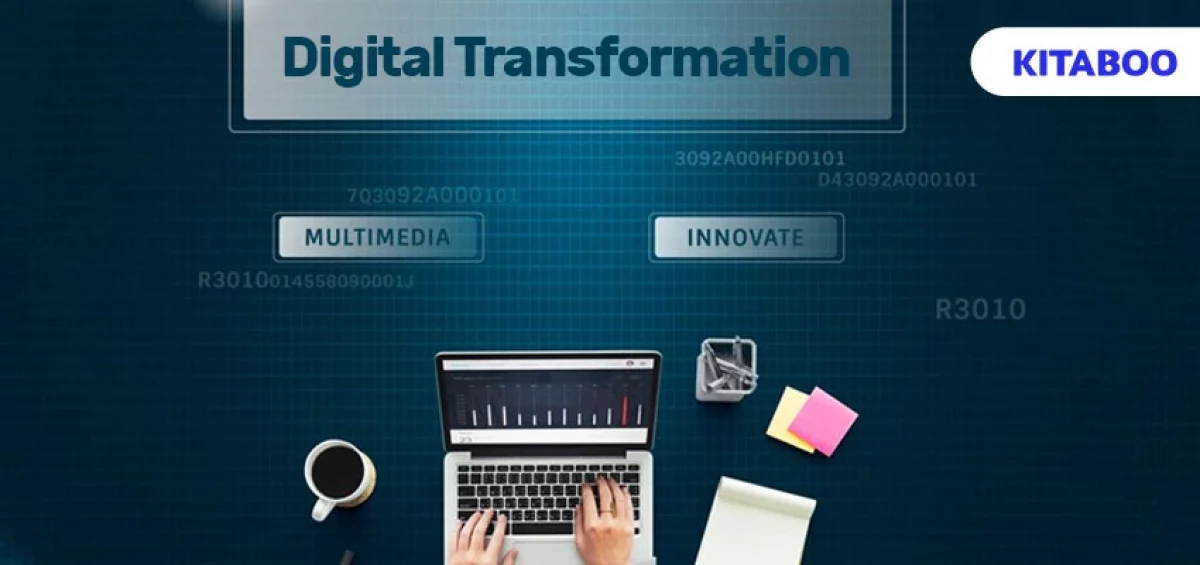Digital transformation of content is more than a buzzword. It’s a critical shift essential for staying relevant in today’s fast-paced media landscape.
Editors have a big role in shaping how things change, using new ideas to make content fit in the digital world. This journey is challenging but offers immense opportunities for growth and innovation. Whether you’re an editor or a manager, you play a crucial role in not just accepting this change but leading the way.
Especially when it comes to the K12 sector, where educational content is undergoing a significant transition, editors can be the driving force behind a successful digital evolution.
In this article, we explore the strategies and challenges editors face in driving successful digital transformation of content. Read on!
Table of Contents:
I. Understanding the Digital Transformation Landscape
II. The Editor’s Role in Digital Transformation
- Crafting a Vision: Leading the Digital Shift
- Content Overload: Balancing Quantity and Quality
- From Print to Pixel: Transforming Workflows
- Tech-Infused Creativity: Blending Art and Algorithms
- Collaboration in the Cloud: Breaking Silos
- Tailoring Experiences: The Power of Personalization
- Metrics that Matter: Data-Driven Decision Making
- Empowering Minds: Nurturing Digital Literacy
- Navigating the Human Element: Change Management
III. Success Stories: Editors Paving the Digital Way
IV. Wrapping Up
Understanding the Digital Transformation Landscape
Digital transformation isn’t a choice; it’s a survival strategy. It is necessary to recognize the imperative to evolve and understand the seismic shifts in consumer behavior and technological advancements.
This awareness positions you to stay ahead of the curve. It ensures that your content remains not only relevant but also anticipates the ever-changing needs of your audience. Embrace this strategic shift to not just survive but thrive in the dynamic digital landscape.
The Editor's Role in Digital Transformation
Editors play a key role as pioneers in the digital transformation journey. Your visionary leadership shapes the evolution of content, steering teams toward indigenous approaches.
You bridge traditional content methods with digital advancements, fostering a culture of adaptability and creativity.
Here are some strategies that empower editors to lead a successful digital transformation in the K12 sector:
1. Crafting a Vision: Leading the Digital Shift
Your vision sets the tone for the entire organization. Clearly articulate the benefits of digital transformation and align them with broader business objectives.
A well-communicated vision fosters a shared sense of purpose among your team, making the journey smoother. As an editor, your role is not just to manage content but to envision its future.
When it comes to the K12 sector, digital transformation involves leveraging technology to enhance and modernize education. In this regard, editors need to envision a future where technology seamlessly integrates with traditional teaching methods.
2. Content Overload: Balancing Quantity and Quality
The influx of content in the digital age can be overwhelming. It’s crucial to strike a balance between quantity and quality.
Implement content curation strategies, focusing on relevance and value. Quality content not only attracts but retains an audience in a sea of information. Content overload is not just about the sheer volume; it’s about the noise that surrounds it.
Editors must curate content with precision, ensuring that each piece contributes meaningfully to the overall narrative. This strategic approach helps maintain quality and enhances the overall user experience.
3. From Print to Pixel: Transforming Workflows
Transitioning from traditional print workflows to digital platforms requires agility. Implementing agile methodologies enhances adaptability and responsiveness. Break down silos within your team, fostering collaboration and efficient communication.
The digital landscape demands speed and flexibility. Agile workflows ensure that your team can respond swiftly to market changes and consumer trends.
Iterative processes and constant feedback loops become integral, enabling your team to evolve alongside the dynamic digital environment.
4. Tech-Infused Creativity: Blending Art and Algorithms
Leverage technology as a creative ally, not just a tool. Embrace AI and machine learning to analyze trends, allowing your team to create content that resonates with your audience. The fusion of art and algorithms opens up new possibilities.
From AI-assisted content creation to immersive storytelling using augmented reality, the digital landscape offers a canvas for innovative expression.
In this regard, editors can utilize powerful digital textbook platforms like KITABOO to monitor content consumption and delivery patterns. It allows you to enhance and customize content by gauging interest levels and tracking the reader’s progress. This way, you can dynamically adapt and tailor the content to meet the evolving needs and preferences of your audience, ensuring a more engaging and personalized learning experience.
5. Collaboration in the Cloud: Breaking Silos
Move beyond traditional hierarchies and embrace collaborative tools. Cloud-based platforms break down silos, fostering a dynamic and responsive digital ecosystem.
Encourage cross-functional collaboration to harness diverse perspectives. Collaboration in the digital realm is not just a convenience; it’s a necessity.
Cloud-based tools facilitate real-time collaboration, ensuring that every team member is on the same page. Breaking down silos fosters an environment where ideas flow freely, leading to more innovative and holistic content creation.
In the K12 sector, this approach enables educational institutions to create a seamlessly connected learning environment that transcends physical boundaries.
6. Tailoring Experiences: The Power of Personalization
Harness the power of data to personalize content for your audience. Understanding your users’ preferences allows you to create targeted and engaging experiences. Invest in advanced analytics to derive actionable insights.
Content personalization goes beyond surface-level customization. It involves understanding your audience on a granular level, anticipating their needs, and delivering content that feels tailor-made for each individual. This not only enhances engagement but also builds a loyal and satisfied audience base.
7. Metrics that Matter: Data-Driven Decision Making
While clicks matter, deeper metrics provide valuable insights. Dive into data analytics to understand user behavior, preferences, and pain points. Use these insights to make informed decisions and refine your content strategy.
Data isn’t just about numbers; it’s about understanding your audience’s digital footprint. Analyze user interactions, track conversion funnels, and measure the impact of your content on business goals.
8. Empowering Minds: Nurturing Digital Literacy
Equip your team with the skills needed for the digital age. Foster a culture of continuous learning, providing training on emerging technologies, digital tools, and industry trends.
Digital literacy is not just an asset but a necessity for editorial success. This proactive approach not only enhances productivity but also instills a sense of confidence and adaptability within the editorial team.
9. Navigating the Human Element: Change Management
Resistance to change is natural. Editors, in today’s landscape, need to address concerns empathetically, communicate the benefits of transformation, and involve their teams in decision-making processes. This not only fosters a more collaborative environment but also ensures that team members feel valued and understood during the change process.
Success Stories: Editors Paving the Digital Way
Success stories offer valuable insights into strategies that worked, potential pitfalls, and the adaptability required for sustained success.
Here are two compelling success stories showcasing editors paving the way in the digital realm:
- The New York Times’s digital transformation has been exemplary. Shifting from print to a robust online presence, they embraced multimedia content, interactive features, and personalized user experiences.
- Another noteworthy example is The Guardian’s successful transition to a digital-first approach. By focusing on reader engagement, data analytics, and innovative storytelling formats, they secured a strong digital foothold.
Conclusion
The future is dynamic, and the role of editors in shaping the future of digital content creation is paramount. Editors and general managers need to make sure they stay at the forefront of innovation, embracing the dynamic changes that technology brings to the content landscape. This will position them as leaders in an ever-evolving industry.
In this context, digital textbook platforms like KITABOO have emerged as powerful tools. It seamlessly integrates into your workflow, transforming content into engaging digital experiences. Editors can seamlessly utilize its features for collaborative content creation, personalized user experiences, and real-time analytics.
Write to us at KITABOO@hurix.com to know more!
Discover How An Ebook Conversion, Publishing & Distribution Platform Can Help You
Kitaboo is a cloud-based content platform to create-publish & securely distribute interactive mobile-ready ebooks.
You May Also Like







